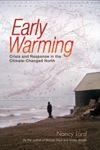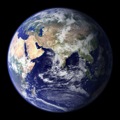[youtube]O5h02Yc6lfA[/youtube]
The latest Arctic Report Card was published yesterday at the American Geophysical Union’s Fall Meeting in San Francisco, and it makes grim reading. Apart from last summer’s new record low sea ice minimum, all the indicators of warming are pointing in the wrong direction. The Arctic is making a rapid transition to a new climate state. Highlights of the report (from the press release):
- Snow cover: A new record low snow extent for the Northern Hemisphere was set in June 2012, and a new record low was reached in May over Eurasia.
- Sea ice: Minimum Arctic sea ice extent in September 2012 set a new all-time record low.
- Greenland ice sheet: There was a rare, nearly ice sheet-wide melt event on the Greenland ice sheet in July, covering about 97 percent of the ice sheet on a single day.
- Vegetation: The tundra is getting greener and there’s more above-ground growth. During the period of 2003-2010, the length of the growing season increased through much of the Arctic.
- Wildlife & food chain: In northernmost Europe, the Arctic fox is close to extinction and vulnerable to the encroaching Red fox. Massive phytoplankton blooms below the summer sea ice suggest that earlier estimates of biological production at the bottom of the marine food chain may have been ten times lower than was occurring.
- Ocean: Sea surface temperatures in summer continue to be warmer than the long-term average at the growing ice-free margins, while upper ocean temperature and salinity show significant interannual variability with no clear trends.
- Weather: Most of the notable weather activity in fall and winter occurred in the sub-Arctic due to a strong positive North Atlantic Oscillation, expressed as the atmospheric pressure difference between weather stations in the Azores and Iceland. There were three extreme weather events including an unusual cold spell in late January to early February 2012 across Eurasia, and two record storms characterized by very low central pressures and strong winds near western Alaska in November 2011 and north of Alaska in August 2012.
It’s well worth digging down beyond the executive summary to look at the individual reports for key elements in the Arctic — there’s a lot of detail to digest, all of it fascinating, much of it sobering, if not downright scary. This is rapid climate change, happening now. I wonder if anyone in Doha will notice?
Like this:
Like Loading...


 ‘Tis the
‘Tis the